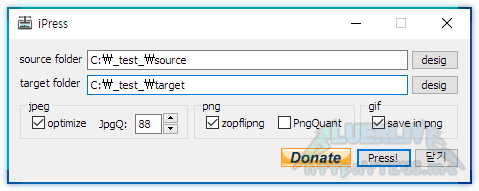

- Gifsicle with png install#
- Gifsicle with png zip file#
- Gifsicle with png code#
- Gifsicle with png download#
It should spew out a whole bunch of output, and so long as you don’t see any errors, you can move on to the next step. If you’re compiling jpegtran on a shared server where you don’t have root access, you need to add ‘ –disable-shared’ after the configure command like so. For the most part, you can just navigate into the folder extracted from the tarball, and run the configure script, like this: cd optipng-0.7.5/ If you don’t have these installed, the package names are usually something like libjpeg-dev and libpng-dev. Libwebp (cwebp) requires the libjpeg and libpng development files. Optipng and Pngquant both depend on libpng-dev or libpng-devel. This is a nice short step (usually) unless you’re missing dependencies.
Gifsicle with png zip file#
zip file from any of the sites above, you just do ‘unzip put-the-filename-here.zip’ 3. Naturally, options ‘j’ and ‘z’ are mutually exclusive, but the others will generally remain the same. bzip2į = file, or in other words “use the file listed after this option” J = bzip2 compression, when the extension is. Z = gzip compression, usually when the extension is. V = verbose (you can skip this, but I like to see what the command did) Here are a few examples: tar xvzf gifsicle-1.88.tar.gz To extract a tarball, the compression used is important, because it means you’ll be using different options for the tar command.

The second extension tells you what kind of compression has been used after the tarball was created. Tar is an alternative to zip which is very common in the Unix/Linux world. They both have double extensions at the end, one of which is. Unpack/extract the tarball:įor those of you unfamiliar with the term tarball, take a look at the file extensions of the two files I mentioned above.
Gifsicle with png download#
Optipng is a little tricky to get the direct url since it is hosted on Sourceforge, but you should end up with a download url like this: (just strip off all the junk at the end if you copy the Direct Link that Sourceforge gives you). You can download these however you like, but I generally use wget like so: wget Webp: (latest source tarball is usually at the bottom) Download the source package from the project’s website: If you are not the root user, or you would like to have the latest versions installed, read on! 1.
Gifsicle with png install#
If you prefer the pre-built versions from the repositories, something like “apt-get install gifsicle” or “yum install gifsicle” will get you going. As the root user, that is up to you though. The versions that are generally provided are often out of date, and some (like cwebp and pngquant) are under pretty active development, so bug fixes and new features are coming out much more frequently. However, I don’t recommend that for most of the utilities except jpegtran, and possibly optipng. It should be noted, that if you have root access, you could install a few of theses utilities yourself from the normal repositories. Yes I Can!Īt least we think so, time will tell. The good news is that I built the ECloud service for you too (again, unless you want to switch web hosts). If any of those says something like “command not found”, then you won’t be able to build anything, and you are in the same boat as the folks with no shell access. There are a few commands that will give you some hints, so try these: ldconfig -p | grep libjpeg Can I build it?įirst, you need to find out if you have build (compiling) utilities available. This may be a bit intimidating if it is the first time you’ve ever done this, but I’ll walk you through it step by step.

If you DO have shell access, but not root access, you may be able to build the necessary binaries for your server. If you find yourself in that position, you are exactly why I created the ECloud service (unless you want to switch web hosts). Some smaller hosts may be willing to do this, most large hosts will not even think twice before telling you NO. If you don’t have root access, and don’t even have shell/ssh access, then you will need to ask your webhost to install the utilities for you. If you are on a shared server, then you do not have root access…ever. If you’re on a dedicated server or VPS, then you should have root access, but sometimes a VPS is really just a shared server with guaranteed resources. The first question you need to answer is “how much access do you have to your server?” Do you have command line (shell) access? If so, do you have root access? If you don’t know if you have root access, then you don’t.
Gifsicle with png code#
The source code is not available for Pngout, so the only way to install it is via the links on the settings page. But sometimes they don’t because the Linux landscape is quite diverse, and some webhosts will even build their own custom distributions of linux. The Ecomes bundled with binaries (executables) that work on most platforms.


 0 kommentar(er)
0 kommentar(er)
